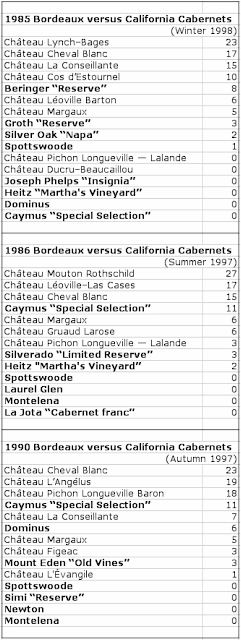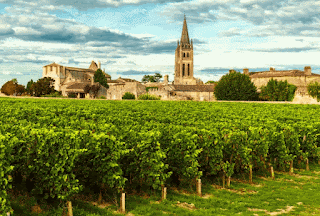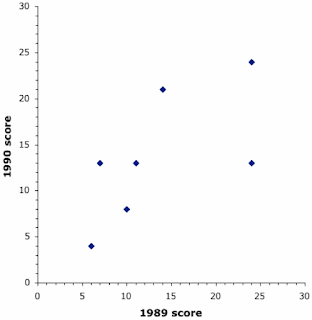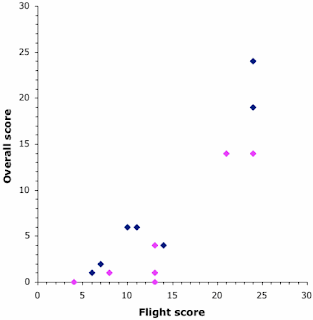One thing we might be interested in, though, is whether those scores have changed in any repeatable way through time, between vintages. Obviously, we could not look at all of the scores, because there are hundreds of thousands, if not millions, of them. What we need is some way of simplifying things.
One way to do this is, instead of being concerned with scores for each vintage of individual wines, we use a single score for a whole wine-making region for each vintage. That is, there would be one number summarizing the vintage quality on average across a specified wine-making region, which is a much more manageable set of numbers.
The best known of these regional systems is the one provided by Wine Enthusiast: The Official 2024 Wine Vintage Chart. They note:
Wine Enthusiast reviewers update the vintage chart annually to reflect [environmental] factors and indicate the average quality and drinkability of vintage-dated wines to help you know which to buy and when to enjoy them. The ratings are broad indications, however, so be aware that many wineries make excellent wines in lower–rated years.The score interpretations are listed as:
- 98—100 Classic
- 94—97 Superb
- 90—93 Excellent
- 87—89 Very Good
- 83—86 Good
- 80—82 Acceptable
- France
- Italy
- Rest of Europe (Spain, Portugal, Germany, Austria)
- California
- Rest of USA (Oregon, Washington, New York)
- Southern hemisphere (Australia, New Zealand, South Africa, Chile, Argentina).
Note that for France the scores for the years 1997—2008 are low, for 2009—2017 they are erratic, and for 2015—2022 they are high.
For Italy the data generally vary within a narrow range, but that several poor years were also present.
For the Rest of Europe average scores generally seem to increase.
For California, the scores are erratic for the years 1997—2011, and are then higher for 2012—2022.
For the Rest of the USA_graph, the scores follow roughly this same pattern as for California. That is, it is a general pattern for North America.
For the Southern Hemisphere graph, the scores for 1997—2004 are low, for 2005—2017 they are erratic, and for 2018—2022 the scores are relatively high.
Returning now to my original question, about possible consistent patterns through time, one interesting question is about whether there is actually an increase in average quality score through time, in any of these graphs. Mathematically, for a linear increase this is measured by the Coefficient of Determination, as a percentage (0—100%). The numbers for our graphs are:
- France 67%
- Italy 1%
- Rest of Europe 51%
- California 36%
- Rest of USA 39%
- Southern hemisphere 39%
As a visualization, for France I have added the line of best fit to this next copy of the scores graph, to illustrate the increase. Apparently, French wine has continued to get better over the past 2.5 decades. This cannot continue indefinitely, of course, although the line on the graph forecasts that an average quality score of 100 will be achieved in c. 2040 (16 vintages from now)!
My analysis here is mainly theoretical, of course. First, there is the matter of how much practical value there is to a single quality score for a whole region. Clearly, vintages vary in response to the weather, and so we do recognize differences in quality, and we can clearly put a number to this, as provided by Wine Enthusiast. Second, there is the matter of whether we can average these regional scores across larger areas, as I have done here. Numbers can always be averaged, and this is basically what Wine Enthusiast does for the regions anyway, by averaging the wines themselves; and so I am simply extending that concept. Third, the linear trends clearly evident in two of the graphs, and to a lesser extent in three others, is noteworthy; but it is unclear that there is any simple interpretation of this.


















